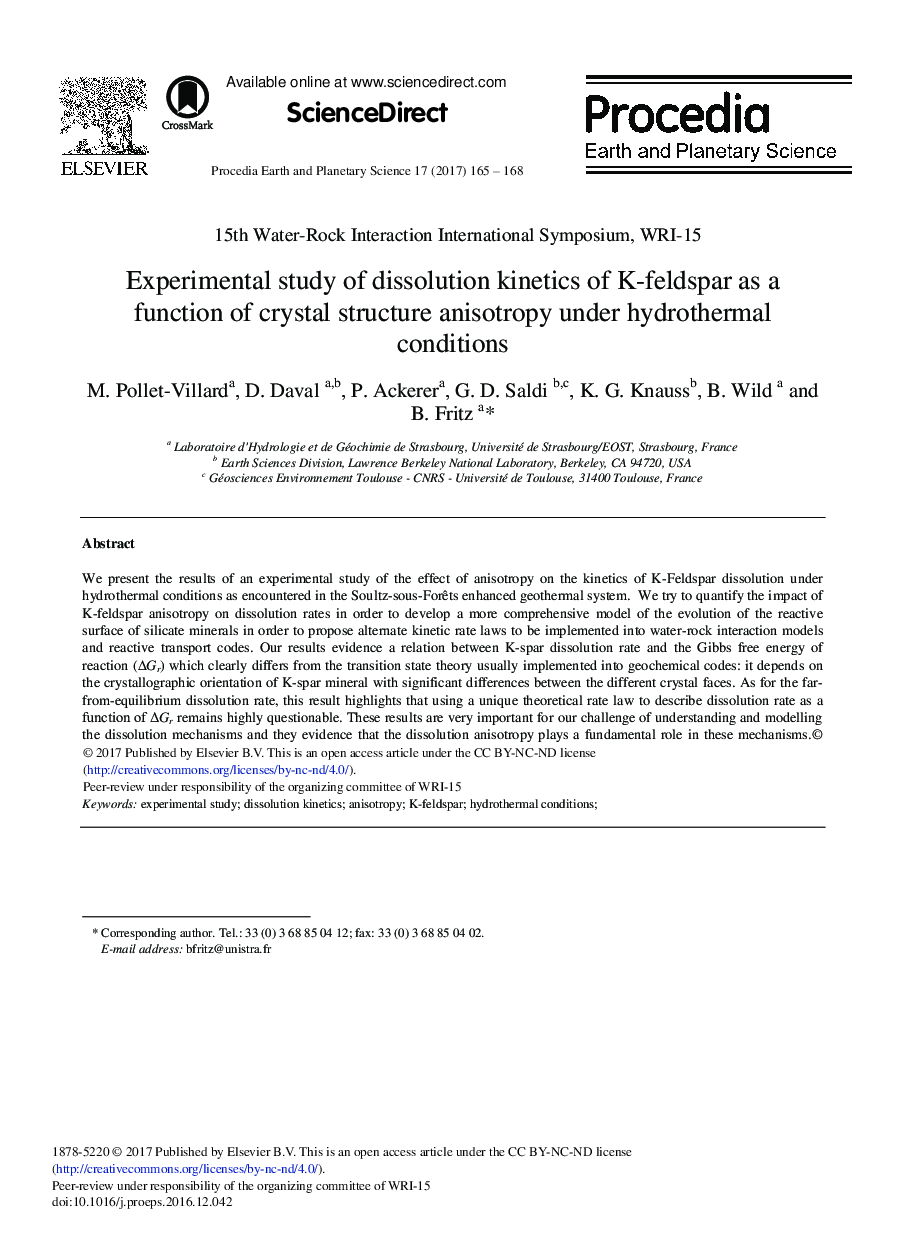| Article ID | Journal | Published Year | Pages | File Type |
|---|---|---|---|---|
| 5779260 | Procedia Earth and Planetary Science | 2017 | 4 Pages |
Abstract
We present the results of an experimental study of the effect of anisotropy on the kinetics of K-Feldspar dissolution under hydrothermal conditions as encountered in the Soultz-sous-Forêts enhanced geothermal system. We try to quantify the impact of K-feldspar anisotropy on dissolution rates in order to develop a more comprehensive model of the evolution of the reactive surface of silicate minerals in order to propose alternate kinetic rate laws to be implemented into water-rock interaction models and reactive transport codes. Our results evidence a relation between K-spar dissolution rate and the Gibbs free energy of reaction (ÎGr) which clearly differs from the transition state theory usually implemented into geochemical codes: it depends on the crystallographic orientation of K-spar mineral with significant differences between the different crystal faces. As for the far-from-equilibrium dissolution rate, this result highlights that using a unique theoretical rate law to describe dissolution rate as a function of ÎGr remains highly questionable. These results are very important for our challenge of understanding and modelling the dissolution mechanisms and they evidence that the dissolution anisotropy plays a fundamental role in these mechanisms.
Related Topics
Physical Sciences and Engineering
Earth and Planetary Sciences
Atmospheric Science
Authors
M. Pollet-Villard, D. Daval, P. Ackerer, G.D. Saldi, K.G. Knauss, B. Wild, B. Fritz,
